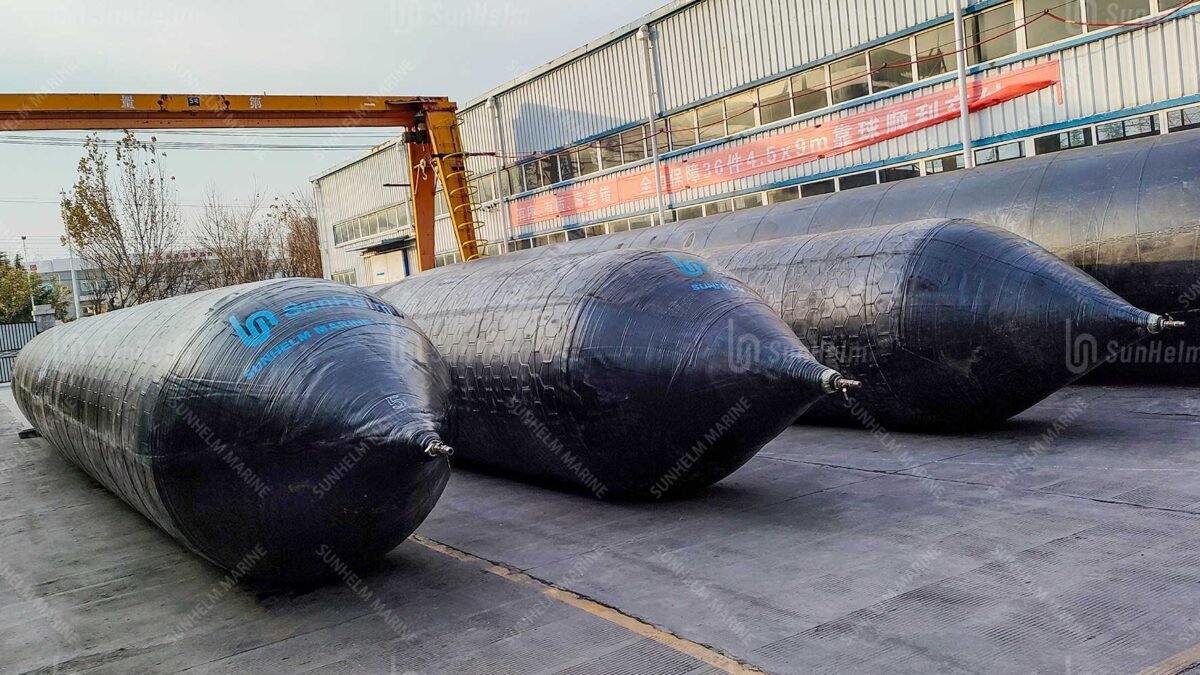Introduction
As the shipbuilding industry continues to evolve, launching large vessels safely and efficiently has become a critical engineering challenge. Traditional methods, such as dry docks or fixed slipways, require massive infrastructure and resources. However, a more flexible, cost-effective solution has emerged from China: ship launching airbags. Their development, now globally recognized through the ISO 14409 international standard, marks a major shift in how ships of all sizes can be launched or docked.

Background and Significance of Ship Launching Airbags ISO 14409
On September 1, 2011, the International Organization for Standardization (ISO) officially released ISO 14409:2011, titled Ships and marine technology — Ship launching air bags. The release was announced at a news conference by China’s Standardization Administration. This international standard, based on Chinese national specifications, establishes a unified framework for the design, materials, testing, and performance of ship launching airbags.
What makes this milestone particularly significant is that it formalizes a ship launching technique that originated in China. As early as the 1980s, Chinese shipyards began using rubber airbags for launching vessels. Unlike conventional dry dock or slipway launching, this method offers lower costs, greater flexibility, and rapid deployment—all while reducing the environmental and logistical burdens of permanent infrastructure.
The publication of ISO 14409 has globalized this technique. Already, countries such as Malaysia, Turkey, Vietnam, South Korea, India, Indonesia, and even the United States have adopted ship launching airbags. In fact, after Hurricane Katrina in 2005, a U.S. maritime salvage company imported Chinese-made airbags to refloat more than 2,200 stranded vessels, calling the technology an “immeasurable contribution” to their recovery efforts.
Development and International Recognition
The journey of ISO 14409 from a Chinese innovation to a global benchmark was remarkably fast. Initiated in December 2009, the standard was spearheaded by experts from the China Shipbuilding Industry Comprehensive Technology and Economy Research Institute. In under two years, they successfully organized and led the ISO working group to finalize the draft—making it one of the quickest ISO projects China has led.
As noted by officials from China’s national standardization agency, ISO 14409 represents more than just technical documentation. It is a symbol of international recognition for a homegrown Chinese technology. The successful adoption of this standard signifies China’s growing influence in maritime engineering and standard-setting worldwide.
Structure and Material Requirements
ISO 14409 defines strict requirements for airbag structure and composition. Each airbag typically comprises:
- An outer rubber layer for wear and weather resistance
- Multiple layers of synthetic-tire-cord reinforcement (usually 4–10 layers)
- An inner rubber layer that ensures air-tightness
All components must meet specified performance thresholds. For instance, the rubber must exhibit tensile strength ≥18 MPa, elongation at break ≥400%, and a Shore A hardness of 60±10. Tire-cord layers should achieve strength ≥205 N per strand, with consistent distribution.
Performance Testing and Quality Assurance
The standard mandates comprehensive testing procedures:
- Air Tightness Test: Pressure loss must be less than 5% after one hour
- Compression Test: To verify deformation characteristics
- Burst Test: The airbag must withstand at least three times its rated pressure
- Rebound and Recovery Tests: To confirm operational resilience
Only airbags that pass these rigorous tests and inspections receive certification for commercial use. The standard also outlines packaging, labeling, and documentation requirements, including model, size, rated pressure, batch number, and quality reports.
Environmental and Economic Benefits
Launching a vessel using airbags avoids the cost and complexity of building permanent launching structures. This has particular advantages for small to mid-sized shipyards in developing nations. Airbags can be reused multiple times, and their mobility allows launching in diverse coastal terrains.
As of 2010, over half of China’s newly built cargo vessels under 30,000 DWT used airbag launching. For ships over 70,000 DWT, trials had already begun. With the development of high-capacity airbags, this method now holds strong potential for even larger vessels.
Conclusion
ISO 14409 is a landmark in marine technology, not just as a standard but as a testament to how an innovative, resource-efficient idea from China has gained worldwide credibility. By setting a global benchmark, ISO 14409 ensures that ship launching airbags are safer, more reliable, and ready to meet the demands of modern maritime logistics.
For shipbuilders and operators seeking versatile, low-impact, and scalable launching solutions, ISO 14409-certified airbags represent a proven path forward.
FAQ — Ship Launching Airbags
Q1: What is ISO 14409?
A1: ISO 14409 is the international standard that specifies the design, materials, testing, and use of ship launching airbags. It was published by ISO in 2011 and is based on Chinese national standards.
Q2: Why are ship launching airbags used?
A2: They offer a cost-effective, flexible, and safe alternative to traditional fixed slipways or dry docks, saving time, labor, and resources while enabling launching in various environments.
Q3: What materials are ship launching airbags made from?
A3: They consist of multiple layers: an outer rubber layer for protection, several synthetic tire-cord reinforcement layers for strength, and an inner rubber layer for airtightness.
Q4: How are airbags tested for safety?
A4: They undergo airtightness tests, compression and rebound tests, and burst pressure tests to ensure they meet strict safety and performance standards.
Q5: Are ship launching airbags widely accepted internationally?
A5: Yes. The technology originated in China but is now adopted worldwide, supported by the ISO 14409 standard, and used in many countries for ship launching and salvage operations.


